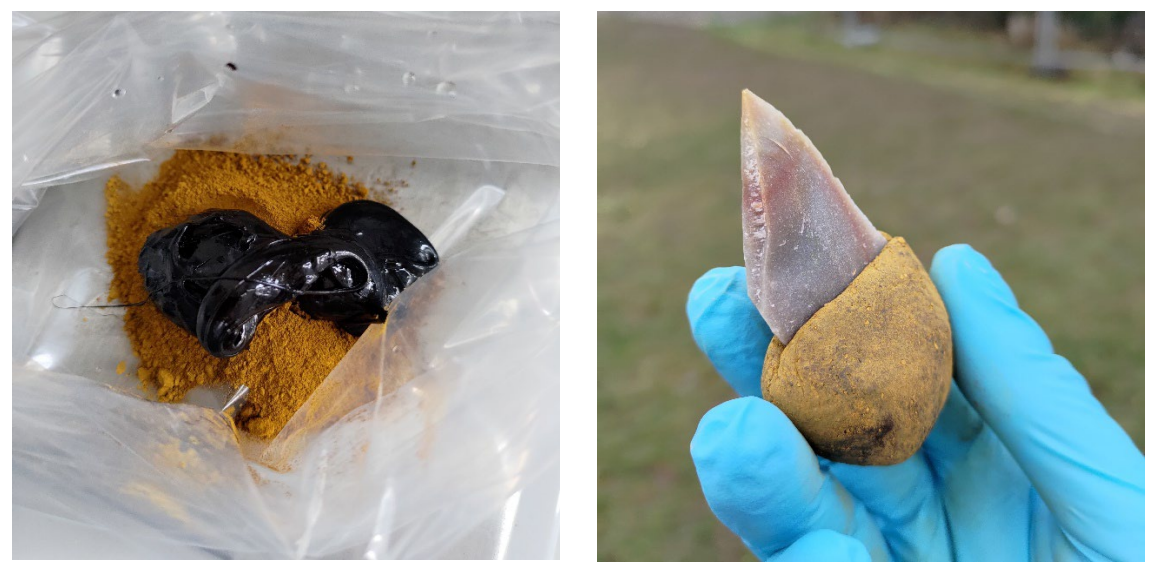Europe’s Earliest Discovery of Complex Glue Uncovered
Research team from the University of Tübingen attributes collection items from Le Moustier, France, to Neanderthals – evidence of higher mental abilities and cultural development

Early humans from what is now France used a multi-component adhesive to add handles to stone tools more than 40,000 years ago. They produced a sophisticated mixture of ocher and bitumen, two raw materials that had to be sourced from the wider region. This is the earliest discovery of a multi-component adhesive in Europe to date.
This resulted in the processing of pieces from the Le Moustier Neanderthal site in the Dordogne under the direction of Dr. Patrick Schmidt from the Department of Ancient Prehistory and Quaternary Ecology at the University of Tübingen and Dr. Ewa Dutkiewicz from the Museum of Prehistory and Early History at the Berlin State Museums. The development of adhesives and their use in the manufacture of tools are considered to be one of the best pieces of material evidence for the cultural evolution and cognitive abilities of early humans. The study was published in the journal Science Advances .
Rediscovered in the museum holdings
The stone tools from Le Moustier are kept in the collection of the Museum of Prehistory and Protohistory and have not previously been examined in detail. The Swiss archaeologist Otto Hauser recovered them in 1907 from the upper rock overhang of Le Moustier, which was used by Neanderthals during the Middle Palaeolithic Mousterian period, 120,000 to 40,000 years ago. During an internal processing of the collection, they were rediscovered and their scientific value was recognized. “The collection items were individually packaged and untouched since the 1960s. As a result, the adhering remains of organic substances were very well preserved,” reports Ewa Dutkiewicz.
Remains of ocher and bitumen on stone tools
The researchers discovered remains of a mixture of ocher and bitumen on several stone tools, such as chips, scrapers and blades. Ocher is a naturally occurring colored earth pigment. The hydrocarbon mixture bitumen is, among other things, a component of asphalt, can be made from petroleum, but also occurs naturally in the ground. “We were surprised that the ocher content was more than 50 percent. “Air-dried bitumen can also be used as an adhesive and loses its adhesive properties when such large amounts of ocher are added,” says Schmidt. He and his team tested this in tensile tests and with experimentally produced comparison material.
“It was different when we used liquid bitumen, which is actually not suitable for bonding. If you add 55 percent ocher, you get a malleable mass,” he says. It’s just sticky enough for a stone tool to get stuck in it, but your hands stay clean – so it’s the right thing for a handle. “A microscopic examination of the signs of use in collaboration with New York University revealed that the adhesives on the devices from Le Moustier had been used in this way,” the scientists report.
Targeted approach
The use of adhesives with multiple components, including various sticky substances such as tree resins and ocher, was previously known primarily from early modern humans, Homo sapiens , in Africa. “Such technological developments and the understanding of material properties were also viewed as the first expression of comprehensive human cognitive processes that correspond to our current way of thinking about industrial processes,” says Schmidt.
In the Le Moustier region, ocher and bitumen had to be collected from places far apart, which meant a lot of effort and required planning and a targeted approach. “Taking into account the entire context of the find, we assume that the elaborately produced adhesive material was made by Neanderthals,” says Dutkiewicz. “What our study shows is that similar thought patterns are reflected in early Homo sapiens in Africa and the Neanderthals in Europe,” says Schmidt. “Their different adhesive technologies have the same importance for our understanding of the incarnation.”

